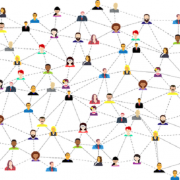In the digital age, the advent of deepfake technology has introduced new complexities to the concept of a safer internet. Deepfakes, artificial media where one person’s likeness is superimposed onto another’s in video or audio, have both mesmerized and alarmed the online community. Here’s an exploration of how deepfakes are reshaping our digital landscape:
Unpacking Deepfakes
Deepfakes leverage AI to manipulate or generate visual and auditory content, making it possible to create hyper-realistic but entirely fabricated scenarios. While this technology has potential in entertainment or education, its misuse poses significant risks:
Misinformation and Propaganda: Deepfakes can fabricate events or statements, spreading misinformation that can influence elections, public opinion, or even incite violence.
Privacy Violations: Individuals can become unwitting targets, with their likeness used in non-consensual pornographic material or to create false narratives damaging their reputation.
Fraud and Scams: From impersonating CEOs for financial scams to creating fake news anchors, deepfakes could be used to deceive individuals into financial or personal data loss.
The Impact on Internet Safety
Erosion of Trust: As deepfakes become more convincing, the authenticity of online content is questioned, leading to a general mistrust in digital media. This skepticism can undermine journalism, official communications, and personal relationships.
Legal and Ethical Challenges: Current laws struggle to keep pace with technology, making it hard to prosecute creators of malicious deepfakes. This legal ambiguity can encourage misuse with little fear of repercussions.
Security Threats: Deepfakes can be weaponized in cyber warfare, used for espionage, or to manipulate markets through fake news announcements.
Countermeasures and Safeguards
Detection Technologies: Researchers are developing tools to identify deepfakes through anomalies in video, audio, or metadata. However, this is an arms race, with each detection method countered by more sophisticated deepfakes.
Digital Literacy: Educating users to question the authenticity of content, look for signs of manipulation, and verify sources before sharing is crucial.
Legislative Action: Governments and tech companies are beginning to draft laws and policies aimed at curbing malicious deepfake use. This includes mandating transparency in AI-generated content.
Platform Responsibility: Social media platforms are implementing policies to remove or flag deepfake content, although the sheer volume of content shared online makes this a daunting task.
Building a Safer Internet in the Age of Deepfakes
Awareness and Education: Public campaigns to understand deepfakes, their potential for harm, and how to spot them are essential.
Authentication Standards: Developing and adopting standards for content authenticity, like digital signatures or blockchain verification, could help assure content integrity.
Ethical AI Use: Encouraging ethical guidelines in AI development to prevent the creation of deepfakes for malicious purposes.
Community Vigilance: Empowering online communities to report suspicious content can act as a grassroots level defense against deepfakes.
Conclusion
Deepfakes have introduced a new dimension to internet safety, where the line between reality and fabrication is increasingly blurred. While the technology itself isn’t inherently dangerous, its applications can be. The journey towards a safer internet in the era of deepfakes involves not just technological solutions but a collective effort in education, policy-making, and ethical considerations. As we navigate this challenge, the goal remains clear: to foster an online environment where truth prevails, privacy is protected, and users can interact with confidence in the authenticity of the content they encounter.






